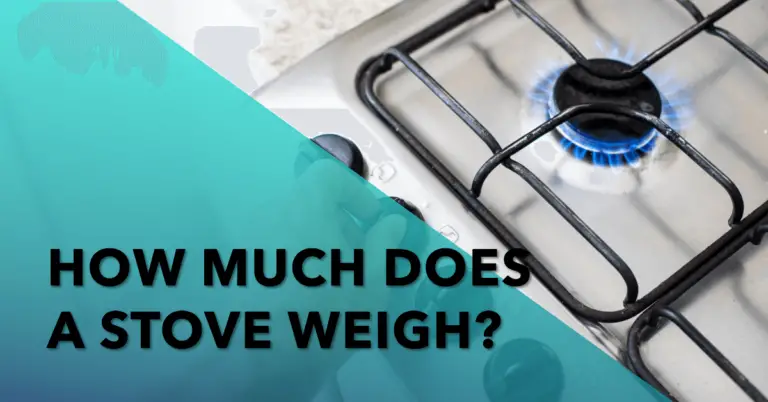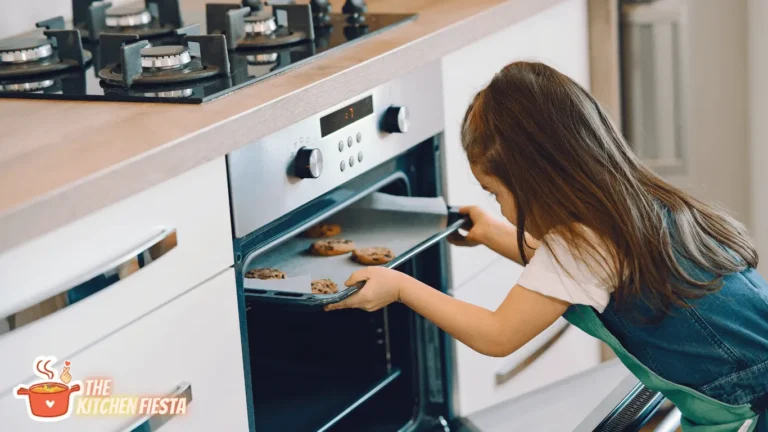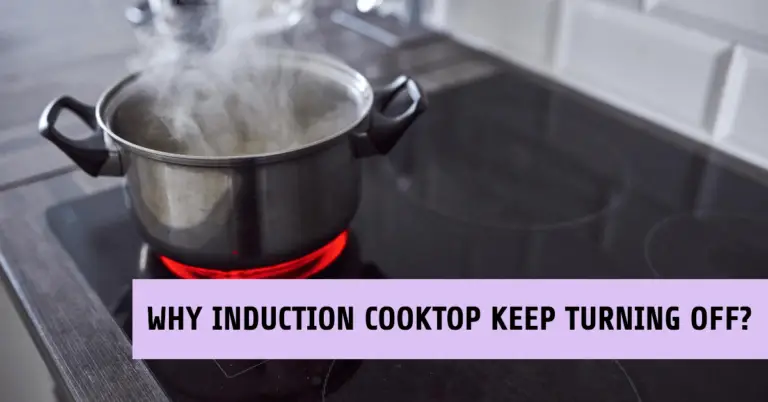What Does F10 Mean on a Stove? A Clear Explanation

The F10 error code on a stove is a common issue that many homeowners face. This error code can be frustrating and confusing, especially if you need to know what it means. In short, the F10 error code indicates that the stove is overheating and needs to be addressed immediately.
There are several reasons why your stove may be overheating and displaying the F10 error code. It could be due to a faulty temperature sensor, a malfunctioning control board, or a problem with the heating element.
Whatever the cause, it’s essential to address the issue immediately to prevent further damage to your stove and ensure that it operates safely and efficiently. This article will discuss what the F10 error code means, what causes it, and how to troubleshoot and fix the issue.
Exploring The F10 Error Code
The F10 error code on a stove indicates that the electronic control board has detected a runaway temperature. This means that the oven is heating up beyond the set temperature or the control board is misreading the temperature. If left unaddressed, this can lead to safety concerns and potential damage to the appliance.
There are several common causes of the F10 error code, including a faulty temperature sensor, a damaged heating element, loose connections, or wiring problems. In some cases, the issue may be resolved by resetting the stove or turning off the power and turning it back on. However, if the problem persists, replacing the electronic control board or the temperature sensor may be necessary.
It is important to note that attempting to repair the stove without proper knowledge and experience can be dangerous. It is recommended to seek professional assistance or consult the manufacturer’s manual for guidance.
To prevent the F10 error code from occurring, it is essential to properly maintain the stove and ensure that it is used according to the manufacturer’s instructions. This includes regular cleaning, checking for loose connections, and avoiding oven overloading.
Common Causes of F10 Error
The F10 error code is a common issue on stoves and ranges. It indicates that the temperature inside the oven is too high, and several factors can cause it. Here are some of the most common causes of the F10 error:
1. Faulty Temperature Sensor
A faulty temperature sensor is one of the most common causes of the F10 error code. Over time, the temperature sensor can become worn out or damaged, leading to inaccurate temperature readings or a complete failure to detect the oven’s internal temperature. If the sensor is malfunctioning, it may need to be replaced.
2. Electronic Control Board Malfunction
A malfunctioning electronic control board is another common cause of the F10 error code. The control board is responsible for regulating the temperature inside the oven. If it is not functioning correctly, it can cause the oven to overheat. Sometimes, the control board may need to be replaced to resolve the issue.
3. Wiring Issues
Wiring issues can also cause the F10 error code to appear. If there is a problem with the wiring between the temperature sensor and the electronic control board, it can cause the oven to overheat and trigger the error code. Checking the wiring and repairing or replacing damaged wires can help resolve this issue.
4. Other Causes
Sometimes, the F10 error code may be caused by other factors, such as a faulty oven door lock mechanism or a malfunctioning cooling fan. It is essential to troubleshoot the issue thoroughly to identify the root cause of the error and determine the best course of action to resolve it.
Troubleshooting F10 Error
If your stove is displaying F10, it means that the electronic control board has detected a runaway temperature. This could be due to the stove not heating to the temperature set or the control board misreading the temperature. Here are some troubleshooting steps to take when dealing with an F10 error.
1. Resetting the Stove
The first thing to try is resetting the stove. Please turn off the stove and unplug it from the power source. Please wait a few minutes before plugging it back in and turning it on. This could reset the control board and fix the issue. If the error persists, move on to the next step.
2. Checking the Temperature Sensor
The temperature sensor sends the stove’s temperature to the control board. A faulty temperature sensor could cause the control board to misread the temperature and trigger the F10 error. To check the temperature sensor, follow these steps:
- Turn off the stove and unplug it from the power source.
- Locate the temperature sensor, usually found at the back of the stove.
- Remove the sensor from the stove and use a multimeter to test its resistance. The resistance should change as the temperature changes.
- The temperature sensor must be replaced if the resistance doesn’t change or is out of range.
3. Inspecting the Wiring
Faulty wiring between the temperature sensor and control board could also cause the F10 error. To inspect the wiring, follow these steps:
- Turn off the stove and unplug it from the power source.
- Locate the wiring between the temperature sensor and the control board.
- Inspect the wiring for any signs of damage or wear.
- If the wiring is damaged, it needs to be replaced.
4. Replacing the Control Board
If none of the above steps fix the F10 error, the control board may need to be replaced. This is a more complex and expensive repair, so it’s best to consult a professional technician. They can diagnose the issue and replace the control board if needed.
Remember, safety is the top priority when dealing with electrical appliances. Always unplug the stove and wear protective gear when inspecting or repairing it.
Preventing F10 Error
1. Regular Maintenance
Regular maintenance is key to preventing F10 errors on a stove. Keeping the stove clean and well-maintained can help reduce the risk of temperature-related issues. It is essential to clean the stove regularly to prevent any buildup of grease or debris that can interfere with the temperature sensor.
One way to ensure regular maintenance is to create a cleaning schedule. For example, the stove could be cleaned once a week, with a more thorough cleaning every month. This can help keep the stove in good condition and reduce the risk of F10 errors.
2. Proper Use of Stove
Proper use of the stove is also essential in preventing F10 errors. Users should ensure that they follow the manufacturer’s instructions, including setting the temperature correctly and not using the stove for purposes other than cooking.
It is also essential to avoid placing any objects on the stove that could interfere with the temperature sensor. For example, placing a pan on the stove that is too large for the burner can cause the temperature to rise too quickly, leading to an F10 error.
Users should also be careful when using the self-cleaning function on the stove. This function can cause the temperature to rise rapidly, which can trigger an F10 error. It is essential to follow the manufacturer’s instructions carefully when using this function.
Users can help prevent F10 errors on their stoves by following these tips. Regular maintenance and proper use can keep the stove in good condition and reduce the risk of temperature-related issues.
Professional Assistance
If the F10 error code persists even after troubleshooting, it may be time to seek professional assistance. A certified technician can diagnose the issue and recommend the best action.
Here are some reasons why it may be a good idea to call in a professional:
- Safety concerns: An overheating oven can be a safety hazard, and attempting to fix it without proper knowledge can lead to further damage or injury.
- Warranty: If the appliance is still under warranty, attempting to fix it yourself can void the warranty.
- Technical knowledge: Some issues may require specialized knowledge or tools to diagnose and fix, which a professional technician would have.
When calling for professional assistance, providing as much information about the issue as possible is essential. This can include the make and model of the stove, the specific error code displayed, and any other relevant details.
A professional technician will likely perform a series of diagnostic tests to determine the root cause of the issue. This may involve checking the stove’s temperature sensor, control board, or other components.
Depending on the issue, the technician may recommend repairing or replacing specific parts. They may also provide tips for preventing similar issues in the future, such as proper maintenance and usage of the stove.
Conclusion
All in all, an F10 error code on a stove indicates that the electronic control board has detected a runaway temperature. This means the oven is overheating and may not be heating to the temperature it was set to. The causes of this error code can vary, including a faulty RTD sensor probe, a malfunctioning temperature sensor, or a broken bake or broil element.
To troubleshoot this error code, one can use a digital multimeter to test the resistance of the bake and broil elements. If either of these elements is faulty, the other element may work overtime to heat the oven, leading to a runaway temperature condition. The oven sensor may also be tested to ensure it functions properly.
If the issue persists, replacing the electronic control board or the temperature sensor may be necessary. It is important to note that some oven parts may wear out due to constant use, and regular maintenance may be required to keep the oven functioning correctly.
Overall, understanding the causes of an F10 error code and how to troubleshoot it can help prevent further damage to the stove and ensure it functions properly.
Frequently Asked Questions
How can I fix the F10 error on my stove?
If you’re experiencing the F10 error on your stove, your electronic control board has likely detected a runaway temperature. You may need to replace the electronic control board or the temperature sensor to fix the issue. Calling a professional technician to diagnose and repair the problem is recommended.
What causes the F10 error code on a stove?
The F10 error code on a stove usually indicates an overheating issue. This can be caused by a malfunctioning temperature sensor, a faulty electronic control board, or a problem with the oven’s heating element. Sometimes, the issue may be due to a dirty or clogged air filter.
What is the electronic control board for a stove?
The electronic control board is the stove component that regulates the temperature and controls the oven’s various functions. It receives input from the temperature sensor and adjusts the heating element accordingly to maintain the desired temperature.
How do I reset the F10 error code on my Frigidaire oven?
To reset the F10 error code on a Frigidaire oven, try turning the power off for a few minutes and then turning it back on. If the error code persists, you may need to replace the electronic control board or the temperature sensor.
Why does my oven keep beeping F10?
If your oven keeps beeping F10, the electronic control board has likely detected an overheating issue. This can be caused by a malfunctioning temperature sensor, a faulty electronic control board, or a problem with the oven’s heating element. Calling a professional technician to diagnose and repair the problem is recommended.
How do I prevent my stove from overheating and displaying the F10 error code?
To prevent your stove from overheating and displaying the F10 error code, keeping the oven clean and well-maintained is essential. Regularly clean the oven and air filter to prevent debris from accumulating and blocking the airflow. Additionally, avoid using the oven at temperatures higher than recommended, and don’t leave the oven unattended while in use.






